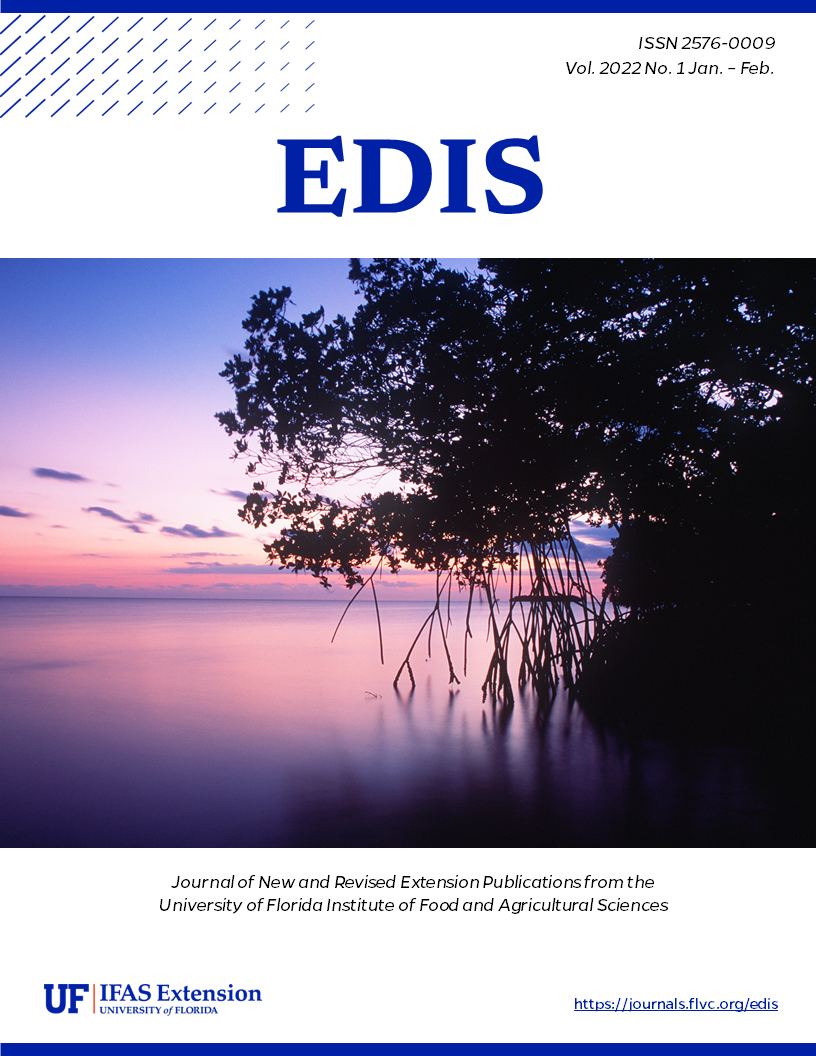Abstract
During migration, birds travel from their northern breeding grounds to their southern wintering grounds and vice versa. To understand which urban habitats are valuable for specific migratory species, we compared the diversity of migratory bird species that used urban forest fragments vs residential areas with tree canopy in Gainesville, Florida. Study results summarized in this fact sheet can help inform urban planners, developers, and homeowners about vegetation migratory birds use. Conservation of large, forested areas is important, but fragmented landscapes are not useless, and conserving urban forest fragments and trees in residential areas is also important for bird conservation.
References
Carr, M. H. and P. D. Zwick. 2016. Technical Report Florida 2070: Mapping Florida’s Future – Alternative Patterns of Development in 2070. A research project prepared by the Geoplan Center at the University of Florida for the Florida Department of Agriculture and Consumer Services & 1000 Friends of Florida. http://1000friendsofflorida.org/florida2070/wp-content/uploads/2016/09/florida2070technicalreportfinal.pdf
Amaya-Espinel, J. D., and M. E. Hostetler. 2019. “The Value of Small Forest Fragments and Urban Tree Canopy for Neotropical Migrant Birds during Winter and Migration Seasons in Latin American Countries: A Systematic Review.” Landscape and Urban Planning 190. https://doi.org/10.1016/j.landurbplan.2019.103592.
Archer, J. M. J., M. E. Hostetler, G. Acomb, and R. Blair. 2019. “A Systematic Review of Forest Bird Occurrence in North American Forest Fragments and the Built Environment.” Landscape and Urban Planning 185 1–23. https://doi.org/10.1016/j.landurbplan.2019.01.005
Fink, D., T. Auer, A. Johnston, M. Strimas-Mackey, O. Robinson, S. Ligocki, W. Hochachka, C. Wood, I. Davies, M. Iliff, L. Seitz. 2020. “eBird Status and Trends, Data Version: 2019; Released: 2020.” Cornell Lab of Ornithology, Ithaca, New York. https://doi.org/10.2173/ebirdst.2019
La Sorte, F. A., and C. H. Graham. 2021. “Phenological Synchronization of Seasonal Bird Migration with Vegetation Greenness across Dietary Guilds.” Journal of Animal Ecology 90 (2): 343–355. https://doi.org/10.1111/1365-2656.13345
Main, M. B., M. C. Christman, A. Karim, and M. Hostetler. 2011. “Species Richness and Diversity of Resident and Migratory Landbirds in Remnant Forest Patches and Residential Areas in the Florida Keys, USA.” International Journal of Ecology Volume 2011 (2011), Article ID 364213, 12 pages https://doi.org/10.1155/2011/364213
Narango, D. L., D. W. Tallamy, and P. P. Marra. 2017. “Native Plants Improve Breeding and Foraging Habitat for an Insectivorous Bird.” Biological Conservation 213:42–50. https://doi.org/10.1016/j.biocon.2017.06.029
Powell, H. 2021. “The Basics of Bird Migration: How, Why, and Where.” Retrieved August 04, 2021, from https://www.allaboutbirds.org/news/the-basics-how-why-and-where-of-bird-migration/
Rodewald, P. G., and M. C. Brittingham. 2004. Stopover Habitats of Landbirds during Fall: Use of Edge-Dominated and Early-Successional Forests.” The Auk 121 (4): 1040–1055. https://doi.org/10.1093/auk/121.4.1040.
Roser, M. 2013. "Future Population Growth." Our World in Data Retrieved from: https://ourworldindata.org/future-population-growth

